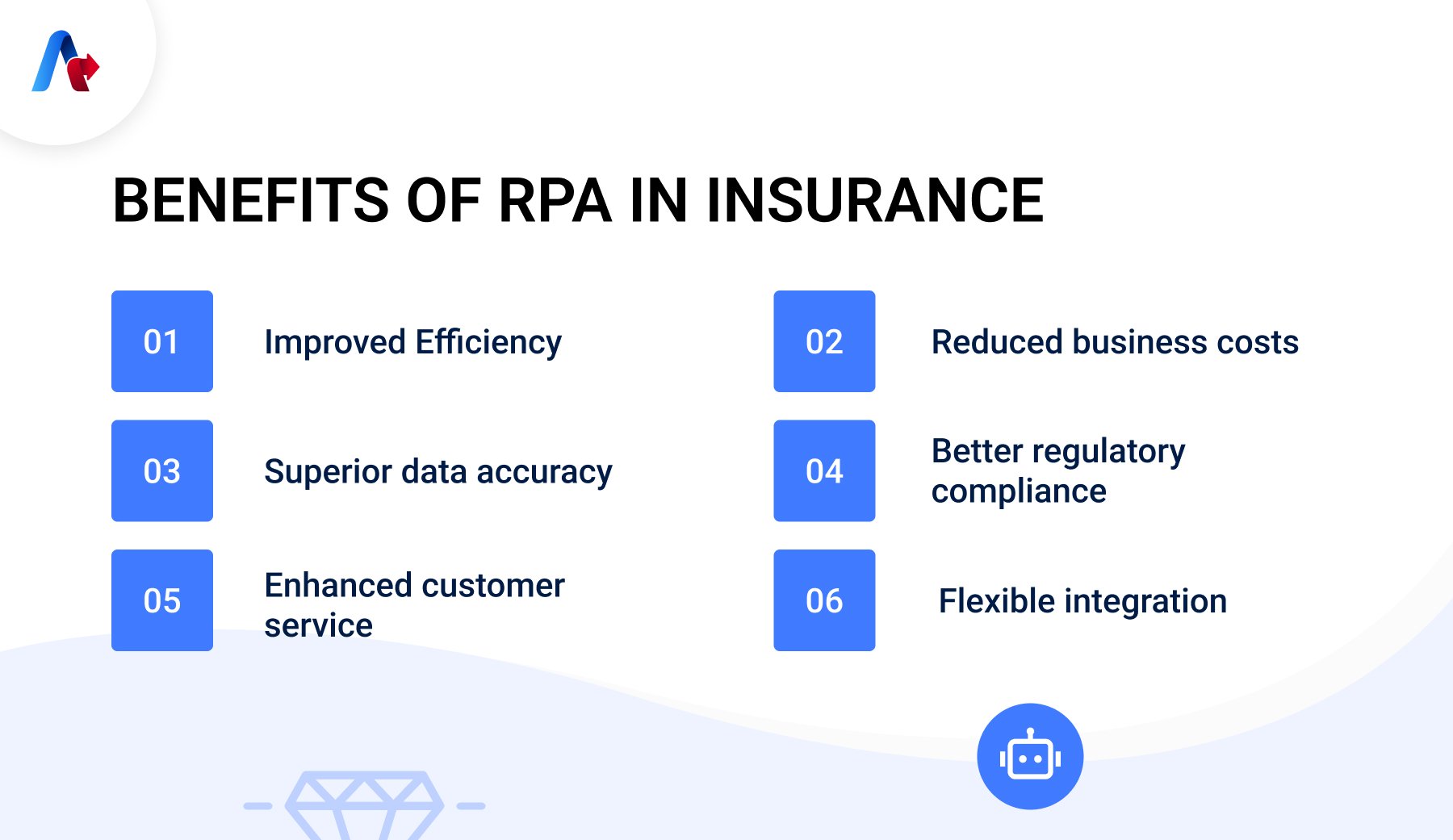The insurance industry, one of the oldest and most vital sectors in the global economy, has always been steeped in tradition. For centuries, insurance companies have relied on paperwork, manual processes, and human judgment to underwrite policies, process claims, and manage customer relationships. While these methods have been effective, they have also introduced inefficiencies, errors, and delays that hinder the overall customer experience and operational efficiency.
Traditional insurance processes are characterized by:
- Manual Data Entry and Processing: Employees spend a significant amount of time entering and re-entering data into various systems.
- Paper-Based Workflows: Many insurance companies still rely heavily on paper forms and documents, which can be easily misplaced or damaged.
- High Operational Costs: Manual processes lead to increased labor costs and can result in slower service delivery.
- Error-Prone Systems: Human errors in data entry and processing can lead to significant financial and reputational damage.
- Regulatory Compliance: Keeping up with constantly changing regulations and ensuring compliance can be resource intensive.
As almost all industries are set to transform with digital technologies, organizations without automation adoption have a higher chance than ever of lagging behind and missing out on great opportunities for efficiency and scale. RPA has emerged as a potential automation technology that can empower organizations to future-proof businesses and achieve growth. In this blog we delve into RPA in insurance and study top RPA use cases in insurance and in-depth evaluate business benefits of insurance automation.
What is Robotic Process Automation in Insurance?
RPA involves the use of software robots or "bots" to automate repetitive, rule-based tasks traditionally performed by humans. In the insurance sector, RPA can be applied across various functions, from policy administration to claims processing and customer service. Robotic process automation is the latest technological development that has taken the insurance industry by storm. Insurance automation allows firms to make their business processes increasingly streamlined and efficient as well as significantly improving their capacity to take on a larger quantity of clients. While partial and ad-hoc automation has long existed within the insurance industry, the RPA paradigm reaps far greater results.
Before delving into the transformative potential of Robotic Process Automation in insurance, it's important to understand the current state of the industry through some recent statistics:
EY
87% of policyholders who believe the claims experience impacts their decisions to remain with insurers with speed of settlement, process transparency being the most important contributors to customer experience.
McKinsey
30% cost of the claims journey for insurers can be reduced with automation. The data and analysis provided by digital technologies allow insurers to understand their clients more effectively. As a result, they will be able to recognize fraudulent claims more effectively and appropriately price and underwrite.
10 Key Use Cases Where RPA in Insurance is Making Significant Impact:

1. Claims Processing
Customers now demand that their claims be handled around-the-clock. But just like with other insurance activities, gathering the required data from disparate sources is a laborious and time-consuming process. The situation is intensified by the fact that fraud rates are rising, which calls for more governance and surveillance.
This is where RPA comes as a saviour for insurers giving them solid support. RPA automates the entire process, from receiving the claim to verifying details and processing payments. This reduces processing time, minimizes human error, and improves customer satisfaction.
For Example: The client, a prominent national health insurance provider, faced challenges in handling claim errors and corrections. The insurer partnered with Accelirate to implement a tailored insurance automation solution. This solution automates extraction of information from emails, claim location, error correction, and SME notification. The results include reduced processing time saving 2,900+ Hours Monthly and improved efficiency and accuracy. Read full success story RPA in insurance claims processing.
2. Underwriting
The underwriting process involves collecting and evaluating enormous customer data to calculate risks and set premiums accordingly. This whole process of extracting the right information can take weeks or even months for varied customer types.
RPA can streamline the underwriting process by gathering and analyzing data from various sources, such as credit scores, past claims, and social media. This helps underwriters make informed decisions quickly and accurately, leading to faster policy issuance and providing personalized insurance covers. Leading insurance companies today use data and analytics to stay ahead of the competition and improve their core functions and launch new business avenues based on historical data.
3. Policy Administration
Insurance Policy Administration includes tasks like accurately issuing the policies, evaluating any risk changes, updating the policies when necessary, managing premium billing, tracking any overdue payments, client data record maintenance, and much more. Relying on the Policy Admin system involves dealing with huge costs and complexity.
RPA automates overall policy admin process starting from policy issuance, endorsements, to cancellations, ensuring accuracy and compliance while freeing up human employees for more value-added activities.
4. Customer Service
Consumer expectations are evolving, and insurers cannot afford to fall behind as society moves closer to being customer centric. It involves more than just making beautiful applications and well-thought-out user experiences (UX). Insurers own an unprecedented amount of data. However, this data is frequently underutilized and kept separate within the company.
Why is this information so crucial? Because chances are multiplied when your agents have access to the appropriate info when they need it. Insurance margins are attained through upsell opportunities, more individualized product offerings, and improved knowledge Automation guarantees constant engagement at all times by offering omnichannel assistance around-the-clock at much lower cost and flexibility.
5. Regulatory Compliance
Strict protocols must govern the insurance sector in order to standardize the documentation and audit trails. Using manual controls puts your insurance company at danger of breaking the law. Furthermore, maintaining high record quantities might make compliance challenging.
Internal review procedures make it simple to check compliance and obtain log files through insurance robotic process automation. Automation in insurance industry can assist with tasks like Validating customer data and conducting client research, Operations related to data security, Account closure and creation of compliance reports
6. Fraud Detection
Insurance fraud is a persistent challenge for the industry, with significant financial implications. According to the Reinsurance Group of America, a staggering 1% to 3% of all life insurance claims are suspected of fraud or misrepresentation. Considering that life insurance fraud totalled a whopping $74.4 billion, the potential losses are immense (Insurance Information Institute).
Insurance companies can no longer afford to rely solely on manual processes to combat this issue. Automation, powered by AI and machine learning, is emerging as a formidable weapon in the fight against fraud.
RPA can help detect and prevent fraudulent activities by continuously monitoring transactions and flagging suspicious patterns. By analysing large volumes of data quickly, RPA can identify potential fraud cases for further investigation, protecting the company and its customers.
For example: Accelirate implemented automation to improved fraud detection for a reputed client. The primary challenges included complex verification processes, time-consuming manual tasks, data quality issues, and fraud detection difficulties. By automating these processes, the solution led to significant overall cost savings by 30%, reduced downtime by 50%, improved accuracy, and enhanced data analytics. Additionally, it boosted customer satisfaction through faster claim updates and processing.
7. Billing and Payments
Automating the billing and payment process with RPA ensures timely and accurate invoicing, reduces errors, and improves cash flow. RPA can handle tasks such as generating invoices, sending payment reminders, and processing payments.
8. Data Management
Insurance companies deal with vast amounts of data from various sources. RPA can automate data extraction, validation, and integration, ensuring data consistency and accuracy across systems. This improves decision-making and operational efficiency.
For example: Accelirate helped an auto insurance company streamline their "Cautious Driver" discount application process using RPA. The solution evolved with automating data management tasks like email handling, data processing, and system interactions, the company significantly reduced manual effort, increased accuracy, and improved efficiency. This case study highlights the power of RPA in data management tackling complex, high-volume tasks within the insurance industry.
9. Marketing, Sales and Distribution
The multiple marketing and sales tasks of different insurance categories can be easily automated with insurance automation. Insurance companies can rely on different automation bots for data collection, market analysis, target customer segmentation, sending mail, and timely notifications to different vendors.
A well-planned Robotic Process Automation in Insurance strategy in place provides significant benefits, including cost savings and speed to scale, easing challenging tasks of GTM initiatives.
10. Reinsurance Administration
Managing reinsurance contracts involves complex calculations and data processing. RPA can automate these tasks, ensuring accuracy and compliance with contractual terms. This helps insurers manage risk effectively and optimize their reinsurance strategies.
Ready to Transform Your Insurance Operations Today!
Connect with ExpertsScaling Up to Insurance Automation
The insurance landscape is undergoing a digital revolution, with automation emerging as a key driver of efficiency, accuracy, and growth. While many insurers have embraced automation, the full potential of this technology is yet to be realized. To truly harness the power of automation, insurers must take a strategic approach. By focusing on high-impact areas and leveraging advanced technologies like AI and machine learning, insurers can gain a competitive edge.
The numbers speak for themselves: The global RPA in insurance market is poised for explosive growth, with a projected value of $1.2 billion by 2031(alliedmarketresearch). This surge indicates a growing recognition of automation's potential to transform the industry. It’s time to streamline your insurance operations with trusted insurance automation experts to strengthen your digital revolution journey.


